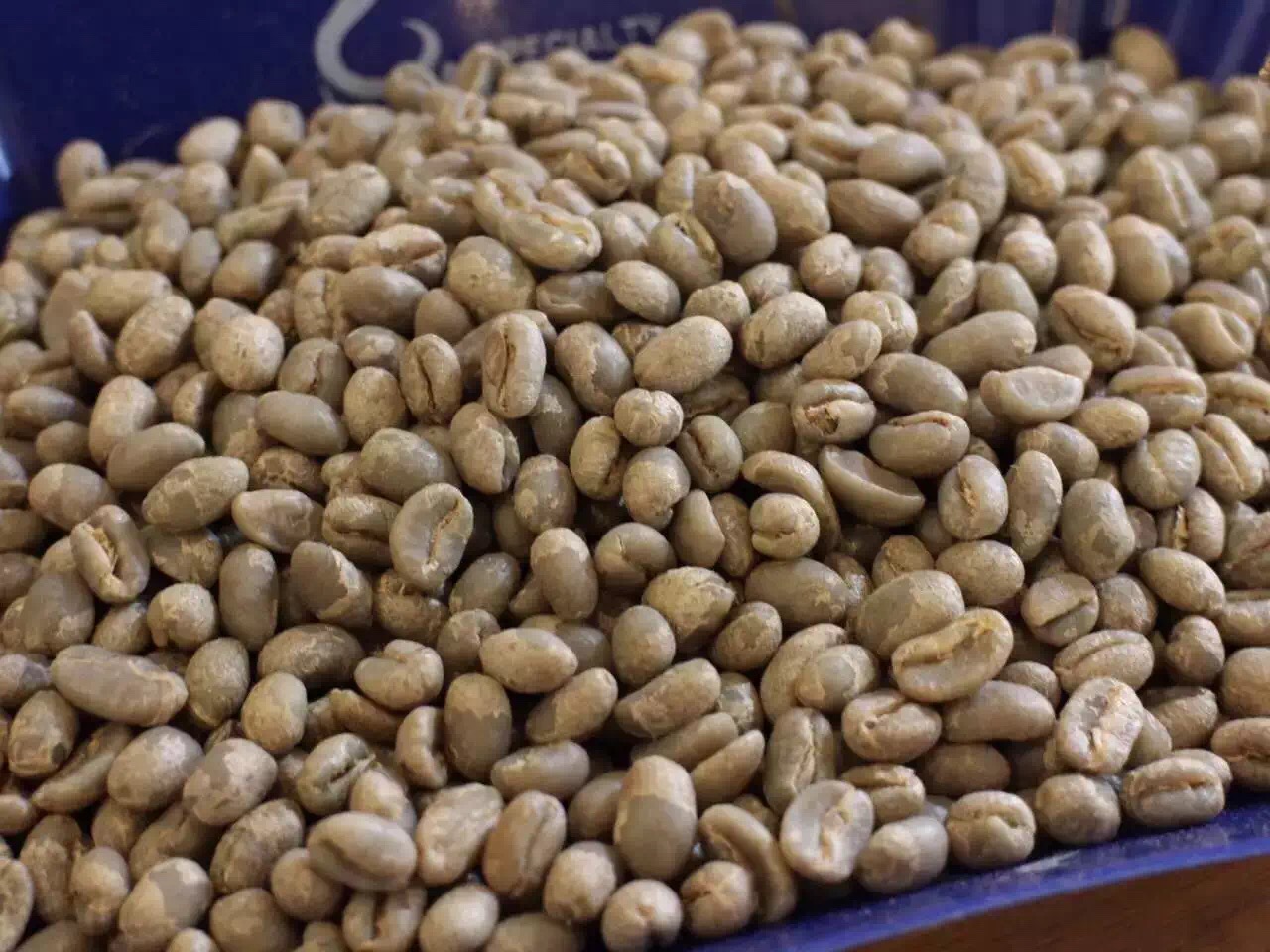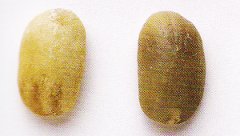A brief introduction to the grading system of coffee beans in Ethiopia

In an age of flamboyant clothes, beautiful masks and expensive silicone, Egyptian beans obviously don't belong to the "irresistible face" category. The long and thin bean shape, coupled with its uneven size, always feels a little born with stunting. Fortunately, God is fair, and the Egyptian beans without outstanding appearance have rich connotations (many ugly people also say the same thing about themselves). And this unique connotation also attracted many fans to fall in love with her. I am also one of the fans. The purpose of this article is to let more people know how Egyptian officials judge beans good or bad. The reasons for writing this summary are:
People often ask: which coffee tastes best? And most of the answers are: this is very subjective, drinking what you like is the best. Using Cantonese to evaluate this answer is: very "yes", very "street". This answer is correct, but only for the average individual consumer, for businesses and the industry as a whole, standards are necessary. How to evaluate the good and bad is too important for the healthy development of the whole industry and the merchants who manage the coffee attentively. As for the logic behind it, I will post it later and discuss it with you. Some background information:-the evaluation criteria of Egyptian beans were developed with the assistance of the American Fine Coffee Association (SCAA). (why can't Egypt, as the hometown of coffee, formulate it independently? Yeah!
-Egypt fully implemented the central auction system in 2008 (previously, exporters purchased and exported separately)
-tell me a little bit about the pre-auction process.
2) Farmers transport fresh fruits to rural cooperatives
3) the cooperative sells fresh fruit to the middleman
4) the middleman collects and transports the fresh fruit to the processing plant (washing or solarization process)
5) the middleman transports the processed beans (with shell beans, Parchment Coffee) to the auction house to set up the warehouse.
6) the auction house gives an official evaluation (evaluation level)
7) the middleman took the sample and official certification to the auction house in the capital to auction the beans with shells.
8) the exporter raised his card and patted the beans after the sample at the auction house.
9) the exporter will send the shell beans back to the shelling plant.
10) the exporter sends the processed raw beans (as we usually see) to the official agency for pre-export certification, and then obtains the official certificate (such as the Shiffy Grade-2 certificate).
The above is a simple process, but in fact there are some small branches, such as the co-operative's own export, which are not detailed one by one.
-Egyptian beans are named after the place of origin, usually after the province. This is a bit like the Bordeaux region of French red wine. Which producing areas are clear to everyone. Note: Chevy is a small producing area in Sidamo Province. Because of its unique flavor, it can become an independent brand. This naming method is very different from other African countries (including the hierarchical naming described below), such as Kenya and Tanzania are named after countries, such as Kenya AA, Tanzania AA. )-(updated on September 22nd, 2011) frequently seen descriptions such as: Yejia Sheffield Grade-2, Harald Grade-3, etc., in fact, these Grade-2,Grade-3 do not exactly represent the level of quality. As follows:
Washing: Grade-1;Grade-2
Sun: Grade-3;Grade-4;Grade-5 and Grade-1
A few points to pay attention to:
A) Gr-1 is available both in washing and in the sun, provided that there is a "zero" defect and Premium Cup. Whether it's washing or tanning, Gr-1 rates the boutique of the boutique or Cup of Excellence coffee.
B) the lowest level of sun-tanned Sheffield and Sidamo is Gr-4, unlike Gemma with Gr-5. But if sunny snow is the general Egyptian export of gr-4, it will be exported under the name of Sidamo gr-4 (the reason may break the reputation of Shifei).
C) beans of the same level, such as Lim gr-2, have both good and bad, according to the "wonderful" content below.
D) to meet the requirements of existing "zero" defects, gr-1 beans (including water-washed or sun-cured) are extremely rare because of the high processing cost (process 9) and very few suppliers will do it.
F) there will certainly be no talk of sunburn or Sidamo or gr-2 II. Parchment Coffee (shell beans) grading system: first of all, it should be made clear that the following system is only for the grading of Parchment Coffee before auction, that is, during process 6), and the certificate issued is only used for auction and cannot be used as an export certificate.
General requirement: the moisture content of sun-cured coffee beans should not exceed 11.5% of the weight, and at least 85% of the beans should be kept above 14 mesh after screening. (that's why Egyptian beans don't look good: more than 14 eyes means 14Magi, 15je, 16je, 17jue, 18, etc. mixed together, beans must be uneven.)
The grading of Parchment Coffee: 1, 2, 3, 4, 5, 6, 7, 7, 9, UG (undergrade). Attention! This is completely different from what Shirley Grade-2, Harald Grade-3, this is a domestic grading logo, used for auction, not export grade naming. There are two major factors for evaluating the above grades: Raw Value (physical factor) accounts for 40 points, Cup Quality Value (cup factor) accounts for 60 points, and the total score is 100 points.
Physical factors include: shortcomings 20, shape 10, color 5, odor 5
Cup factors include: clarity 15, acidity 15, taste 15, flavor 15
Finally, it is graded according to the total score.
And to be rated as a boutique, there is another round of finals, that is, another round of evaluation, which is rated as 1Magne2 and 3, and the evaluation is a cup test evaluation, and the evaluation factors are basically the same as those of SCAA and will not be detailed. After the quality evaluation, there is another name, so don't say it, it will be very messy. (10,000 words are omitted here)
Note: all the above cups will be baked and tested after the shell of the sample is removed.
After the exporter auctions the beans back, process 9), mixing occurs at this step, which has two meanings: a) mixing beans from different hills, and b) mixing beans with different Parchment coffee grades. The key part that affects quality is in b). We have just introduced the grades of 1 to 9 Parchment UG. Let's take Sheffield as an example. The exporter: handsome guy, there is an order for 20 tons of Chefe Grade-2. He has sold back more than 20 tons of Sheffield from the auction house. In most cases, the goods he auctioned are sold in batches, because a mountain top does not happen to have as much coffee as 20 tons. The auction in several batches means that the small production area (hilltop) is different from the Parchment grade. For example, if the handsome guy is shot in four batches, then these four batches will be
A production area 5 tons (grade: 1); 25%
B production area 2 tons (grade: 2); 10%
C production area 10 tons (grade: 3); 50%
D production area 3 tons (grade: 4), accounting for 15%
Then the handsome guy took the Parchment coffee to the processing plant to deal with the export of 20 tons of raw beans. Of course, he had to do the export grade certification before the export, and the official Shifei Grade-2 certificate was issued. Do you see the key?
Let's change it to another exporter: fierce Man, who also has an order of 20 tons. He got back 4 batches of parchment coffee from the auction house:
E production area 1 ton (level: 1); 5%
F production area 1 ton (grade: 2); 5%
G production area 10 tons (grade: 3), accounting for 50%
H production area 8 tons (grade: 4), accounting for 40%
Similarly, the fierce man issued the certificate of Shaffy Grade-2 in the official organization.
Everyone in the world can see that although everyone is called Xuefei-2, the quality of the goods made by handsome men is certainly better than that of fierce men, and much better. Of course, I didn't say that the fierce man is a profiteer, because the export price of the fierce man is lower than that of the handsome guy. Ohh! Finally, everyone thoroughly understood the truth of goods for every penny. The above operations are also applied to other Egyptian beans, such as Sidamo, Gemma, Lachamdi and so on. Summary: 1) in addition to planting, the key factors affecting quality are process 4) and process 9)
2) process 9) is very important. I have visited the processing plant, and the goods that feel well managed are good goods. For example, measures such as workers' regular rest can effectively improve the quality of picking beans.
3) every penny, as an importer, I can bargain, but process 9) this step is beyond the importer's control, and the exporter won't tell you how they mix. The importer can find an exporter who is serious about making coffee.
4) Egypt is divided into Parchment grade and export grade, the two are different but related.
5) the grading of Egyptian beans is the most systematic grading standard I know in African countries.
6) the problem of untraceable source caused by mixing is what boutique coffee often calls traceability (traceability). This is not without a solution and will not be discussed here. Update
7) more Egyptian exporters export Parchment Coffee of Q1 and Q2 (in the original words of the supplier: high quality coffee) in the name of Grade-3. Why? It is still a problem of "zero" defects.
(this article is reproduced)
Important Notice :
前街咖啡 FrontStreet Coffee has moved to new addredd:
FrontStreet Coffee Address: 315,Donghua East Road,GuangZhou
Tel:020 38364473
- Prev

How to manually select coffee raw beans coffee raw bean grading
I agree that the taste of raw beans and apples before selection will not be different because of their size, but when it comes to the roasting of coffee beans, they should be heated anyway, and it doesn't matter if the size of coffee beans is different. Coffee beans harvested from the same tree, regardless of size
- Next

What are the characteristics of manning coffee? Sumatran coffee
Sumatra DP Coffee Coffee Manning Coffee is produced in Sumatra, Indonesia, Asia, also known as Sumatran Coffee. Her flavor is very rich, fragrant, bitter, mellow, with a little sweetness. Most coffee lovers drink on their own, but it is also an indispensable variety for blending coffee. In an era when Blue Mountain had not yet been made public, Manning Coffee was considered to be the world.
Related
- Detailed explanation of Jadeite planting Land in Panamanian Jadeite Manor introduction to the grading system of Jadeite competitive bidding, Red bid, Green bid and Rose Summer
- Story of Coffee planting in Brenka region of Costa Rica Stonehenge Manor anaerobic heavy honey treatment of flavor mouth
- What's on the barrel of Blue Mountain Coffee beans?
- Can American coffee also pull flowers? How to use hot American style to pull out a good-looking pattern?
- Can you make a cold extract with coffee beans? What is the right proportion for cold-extracted coffee formula?
- Indonesian PWN Gold Mandrine Coffee Origin Features Flavor How to Chong? Mandolin coffee is American.
- A brief introduction to the flavor characteristics of Brazilian yellow bourbon coffee beans
- What is the effect of different water quality on the flavor of cold-extracted coffee? What kind of water is best for brewing coffee?
- Why do you think of Rose Summer whenever you mention Panamanian coffee?
- Introduction to the characteristics of authentic blue mountain coffee bean producing areas? What is the CIB Coffee Authority in Jamaica?

